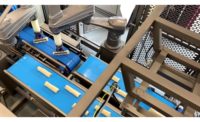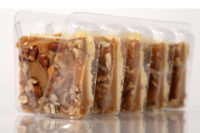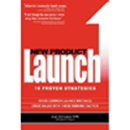With escalating demand for variety packs and various shipping-case configurations that must be shelf-ready, bakers and snack manufacturers need flexible packaging technology.
A flexible case packer should be able to handle packaging challenges that manufacturers face now and in the future. The use of robotic arms can accomplish a multitude of complex packaging functions and gently handle delicate products. As an example, Focke & Co.’s HFP Slim offers these advantages in a compact design and small footprint.
Handling a variety of products
Automation and machine innovation have become essential on the packaging line. A flexible case packer should be able to accommodate manufacturers’ growing and changing product lines. As future product demands change, it’s a wise investment to have an adaptable case packer.
Meeting customers’ packaging needs requires case-packing equipment that can accommodate a growing array of secondary packaging, such as regular slotted containers (RSCs), half-slotted containers (HSCs) and trays, both with and without lids.
Changeovers should take about five minutes to accommodate different case dimensions and a variety of products in the same case. In addition, the machine should be low maintenance and easy to clean. Parts should be accessible and easy to see. It should also be safe to operate and have a streamlined, walk-through design.
Manufacturers often realize that even though their existing equipment remains functional, it can’t always be fully automated to meet current packaging demands. To produce variety packs, manufacturers are adding manual procedures in the final packaging steps, which increases packing time and can create operational inefficiencies that may impact their bottom line.
Recent studies released by the Packaging Machinery Manufacturers Institute (PMMI) indicate that bakery and snack food companies often resort to adopting manual packaging methods when faced with packing variety packages or shipping cases that require specialized configurations.
Packaging demands that bakery and snack food manufacturers face most include different size packages; various container configurations, such as bags, cases and trays; single-serve, multipacks/variety packs; trays without stretch wrap; and multicolor graphics. Systems should provide careful handling and case loading.
Robotic arms have been designed into case-packing equipment to position and orient RSCs, HSCs and trays to the products. For example, as products move to the end-of-line packaging stations, the shipping case can be turned to accommodate up to six different packaging configurations using horizontal, top or side loading.
Easy does it
Products that require delicate care can then be slid into the case. This is especially important for dry food products, such as potato chips and cookies, which can break if they’re jostled prior to being case-packed. A robotic arm can lower the case to the right height to accept another row of product. An empty case can be readied by a second robotic arm after the first case is loaded, so that speeds keep pace with production.
The flexibility created by orienting a case to the packing configuration allows for customized product handling and grouping. Robotic arms can turn a case so that product can be placed in unused spaces within the container, such as along the sides or at the top, for optimal shelf appeal.
Focke’s HFP, for example, can alternate how packages are layered in a case, such as placing one layer of product horizontally and another vertically. If needed, it can produce a flat single layer or shingled layer to optimize use of space. This makes it easier to pack shelf-ready cases and stack them on pallets for shipping.
Quick, tool-less changeovers
A primary benefit of increased machine versatility is reduced changeover time. The time spent on changeover plays a greater role today in operational efficiency, as mass marketers often order varying case counts of six, 12 or 24 items on short notice. This is especially true with food products, as merchants reduce lead times for order fulfillment as part of their just-in-time response to the growing emphasis on product freshness. Despite short turnaround times, merchants still expect manufacturers to meet expected delivery dates.
Many manufacturers want to complete product changeovers in about an hour and ideally within minutes. Faster changeover is a huge plus from an operational efficiency standpoint because it significantly reduces scheduled downtime.
“Downtime is an important factor in changeovers, because the longer a machine is nonoperational, the more it costs the manufacturer in throughput and revenue,” says Marc Scharrer, director of sales and marketing at Focke.
Modularity, safety and less maintenance
Diagnostics can deliver what manufacturers need to reduce escalating maintenance costs and improve uptime. Heat sensors can detect faulty bearings, while monitors can check on materials and electronic components, signal about a machine failure and indicate scheduled maintenance. Integrated software for accurate data collection is also popular. Remote service through secure servers is another benefit production facilities appreciate.
Along with improved diagnostics, fewer moving parts that can reduce maintenance and operating costs are key benefits for which bakers and snack manufacturers look. Components that can be upgraded as needed and fewer mechanical parts mean easier maintenance.
Energy equation
Today, energy efficiency is also an important a part of a manufacturer’s sustainability efforts. To help manufacturers achieve energy efficiency, case-packing equipment should:
• Reduce linear movements to eliminate the need for lubricating axis and slides.
• Reduce the weight of moveable mechanical components.
• Use more industrial personal computers with longer lifespans.
• Be positionable in a standby mode to reduce energy consumption when idle.
• Be able to achieve electrical drive efficiencies of 70% to 85%.
• Achieve mechanical drive efficiency of about 90%.
Partnering with the an equipment vendor that has the necessary experience in service and support is also vital. The equipment supplier should adhere to high standards of quality and innovation. “[We] work closely with customers to develop equipment that meets their needs now and in the future, no matter what changes occur in packaging materials or designs,” says Scharrer. “All of our products are backed by worldwide sales and technical support to produce the highest level of customer satisfaction.”
This article was written by Johann Betschart, vice president of operations at Focke, Whitsett, N.C. For more information about Focke equipment, visit www.focke.com or call 336-449-7200.
Key features of a flexible case packer1) Robot-based technology should have no mechanical timing or cams. 2) A modular, open design allows for easy cleaning and troubleshooting. 3) Can orient a shipping case according to the product, eliminating touchpoints for delicate packages. 4) Should only take five minutes to change over to different product and carton size. 5) Available as a full system or as a standalone loading station. 6) Should have few moving parts to reduce maintenance and operating costs. 7) Should be designed for operator safety with transparent, lockable doors. 8) Predictive maintenance software should be capable of remote machine access. 9) Changeovers should only require a few size parts. |









